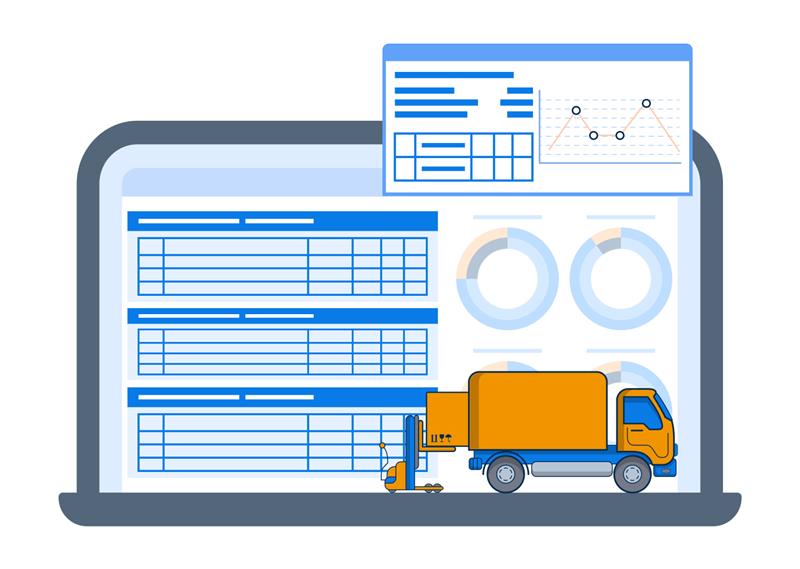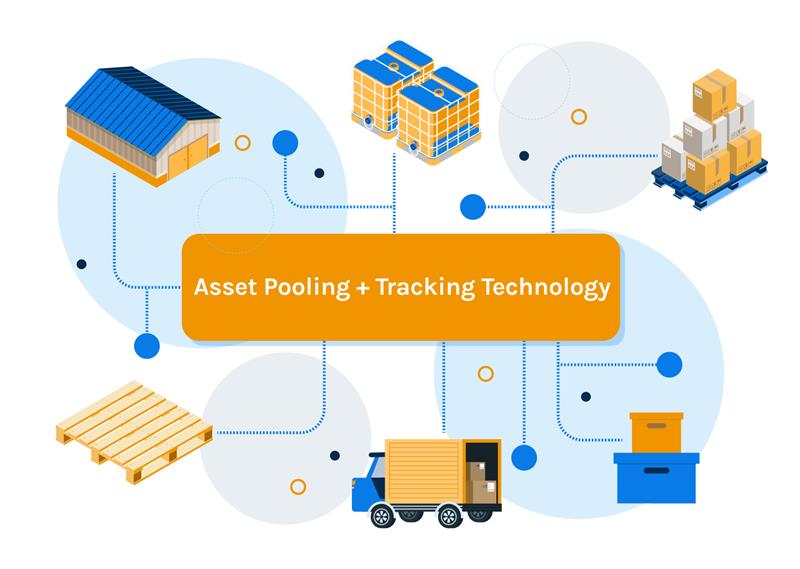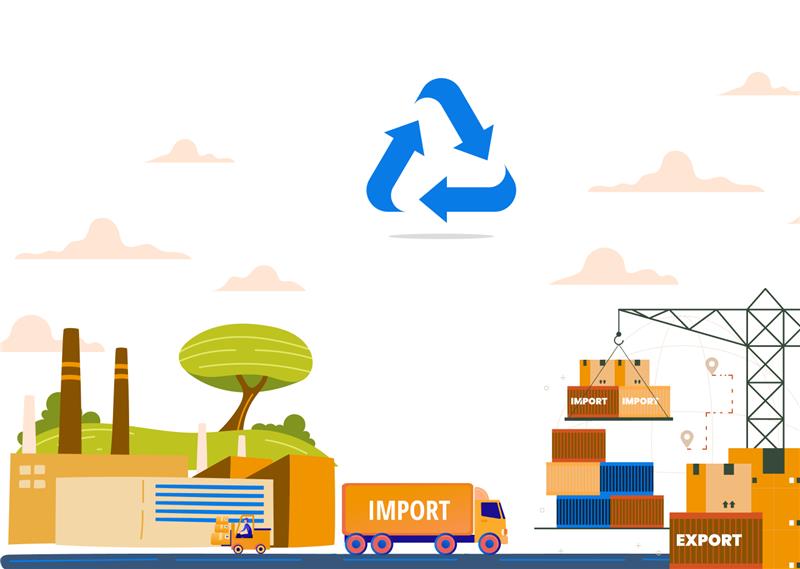In logistics and supply chain operations, the balance between sustainability and efficiency has never been more critical.
Companies are under growing pressure to minimize waste, optimize fleet utilization, and reduce their carbon footprint – all while keeping costs in check. Against this backdrop, asset pooling has emerged as one of the most practical asset management solutions to achieve both economic and environmental gains.
At its core, pooling shifts the model from ownership to shared use. Instead of every manufacturer, distributor, or retailer investing in its own set of reusable assets — such as pallets, roll cages, or containers – these assets are centrally managed by a pool operator and rented or circulated among participants. The result is higher utilization, fewer idle or lost assets, and lower capital tied up in infrastructure that sits unused for much of its life cycle.
When paired with the right asset tracking technology, pooling becomes more than an operational convenience – it becomes an intelligent ecosystem. Real-time visibility across every transfer point ensures that assets are monitored, maintained, and returned efficiently.
This combination of centralized management and continuous tracking not only improves profitability but also strengthens sustainability outcomes. Assets move in tighter loops, resource efficiency improves, and businesses meet both economic and ESG goals.
The Logical Evolution of Asset Pooling
The logistics industry is entering a phase where sustainability targets, capital efficiency, and visibility are converging into a single operational priority. Asset pooling addresses all three. It reduces redundant infrastructure, lowers emissions, and improves the utilization of reusable assets, making it one of the most effective asset management solutions for companies looking to balance profitability with environmental responsibility.
Pooling models have proven their impact across multiple sectors. According to a DHL Supply Chain report, returnable packaging and shared container networks can significantly reduce packaging waste and optimize transport capacity by improving vehicle fill rates – a key performance factor in sustainable logistics
The study shows how pooling allows logistics providers to cut both costs and emissions by reducing single-use packaging and streamlining return logistics loops.
It is apparent, that pooling returnable assets represents one of the fastest-scaling methods for achieving CO2 emission reductions, particularly when they are supported by IoT-enabled visibility and predictive management systems
Similarly, Tosca’s 2023 sustainability report highlights that reusable container pooling in European retail supply chains lowers CO₂ emissions while also cutting procurement and maintenance costs through shared utilization
Pooling also delivers measurable financial benefits. This CHEP note highlights the importance of the pooling model in supply chains and how the extensive scale and digitization afforded by the pooling companies could benefit the logistics providers significantly.
What makes this model increasingly scalable is the rise of modern asset tracking technology. RFID, BLE, and LTE sensors enable continuous monitoring of pooled assets – tracking location, dwell time, and condition with precision.
This data allows pool operators to predict maintenance cycles, identify idle stock, and dynamically redistribute assets to where they are most needed. Visibility converts what was once a static pool into an intelligent, self-adjusting network that optimizes itself through data.
Pooling supported by tracking transforms sustainability from a compliance requirement into an operational advantage. It minimizes waste, reduces cost per shipment, and builds transparency across the logistics ecosystem.
As technologies evolve and ESG expectations tighten, the integration of pooling with connected tracking platforms stands out as the most rational next step for logistics – an evolution that redefines how companies approach asset management solutions for the decade ahead.

How Technology Amplifies Pooling Efficiency
Pooling on its own optimizes asset use; technology amplifies the value of this optimization.
Modern asset tracking technology is no longer limited to identifying where a pallet or container is located. It can now show how, when, and why it’s being used. When sensors, analytics, and observability tools are layered onto reusable assets, the result is not only traceability but intelligence.
IoT connectivity and embedded sensors now enable real-time monitoring of utilization, temperature, shock, and dwell time. Platforms built around AI and machine learning translate this flow of raw data into actionable insights.
Operators can see which assets are underperforming, which routes cause the most delays, and where losses typically occur. Predictive models can forecast when an asset is likely to require maintenance or cleaning before it becomes unserviceable. This level of visibility turns asset pooling into a dynamic, continuously improving system rather than a fixed infrastructure.
The advantage lies not just in the data collection, but in its interpretation. Dashboards and visualization tools convert thousands of sensor readings into clear operational intelligence – showing rotation efficiency, emissions savings, or turnaround performance in a format that decision-makers can use immediately.
AI-supported observability enables automatic anomaly detection: if a shipment of reusable crates deviates from its planned route or exceeds temperature thresholds, alerts are triggered in real time.
For sustainability reporting, these same insights are transformative. Measured reuse cycles, verified emission reductions, and maintenance records can feed directly into ESG and compliance dashboards. In many regions, packaging and waste regulations increasingly demand digital traceability, and the ability to produce verifiable data simplifies audits and strengthens stakeholder confidence.
In essence, the future of asset management solutions will depend as much on analytics as on infrastructure.
Asset tracking technology combined with AI observability ensures that pooling networks operate with minimal waste, maximum transparency, and measurable sustainability outcomes. It makes reusables not only a greener choice but also a smarter one – turning visibility into a source of continuous optimization for the logistics industry.
Closing Thought
Asset pooling backed by advanced technology represents a structural evolution for logistics. Shared systems supported by visibility, analytics, and real-time insights allow businesses to move to optimized asset RoIs.
For the logistics industry, this model delivers measurable impact: lower emissions, better asset rotation, reduced capital overhead, and data that translates directly into sustainability performance.
The result is an ecosystem where efficiency and environmental goals reinforce each other rather than compete.
That’s the opportunity SensaTrak is built around – creating visibility, accountability, and intelligence for every reusable asset in motion.
If you’re an asset pooling/renting company, check out our solution that would perfectly fit all your asset management needs.

